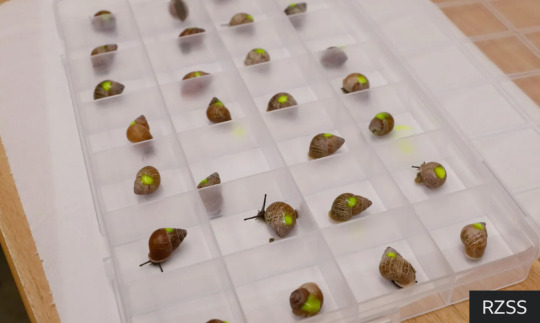#cleaned panels
Explore tagged Tumblr posts
Text

i dont think the sages are distinctly aware of everything their avatars are doing, but i imagine some things probably bleed through
#totk#loz#link#tulin#teba#saki#totk spoilers#(minor)#my art#my comics#this... started off rough and bad and got better as i went on. which is the opposite of what usually happens ?#anyways! the sign in links panel is “nice/clean”#it's supposed to be kind of flatter / more level but i couldnt draw it at that angle :pensive: hopefully it reads#n e ways i loooove tulin so have some silly fluff#(literally. lol)#sparks art
43K notes
·
View notes
Text
"It is 70 years since AT&T’s Bell Labs unveiled a new technology for turning sunlight into power. The phone company hoped it could replace the batteries that run equipment in out-of-the-way places. It also realised that powering devices with light alone showed how science could make the future seem wonderful; hence a press event at which sunshine kept a toy Ferris wheel spinning round and round.
Today solar power is long past the toy phase. Panels now occupy an area around half that of Wales, and this year they will provide the world with about 6% of its electricity—which is almost three times as much electrical energy as America consumed back in 1954. Yet this historic growth is only the second-most-remarkable thing about the rise of solar power. The most remarkable is that it is nowhere near over.
To call solar power’s rise exponential is not hyperbole, but a statement of fact. Installed solar capacity doubles roughly every three years, and so grows ten-fold each decade. Such sustained growth is seldom seen in anything that matters. That makes it hard for people to get their heads round what is going on. When it was a tenth of its current size ten years ago, solar power was still seen as marginal even by experts who knew how fast it had grown. The next ten-fold increase will be equivalent to multiplying the world’s entire fleet of nuclear reactors by eight in less than the time it typically takes to build just a single one of them.
Solar cells will in all likelihood be the single biggest source of electrical power on the planet by the mid 2030s. By the 2040s they may be the largest source not just of electricity but of all energy. On current trends, the all-in cost of the electricity they produce promises to be less than half as expensive as the cheapest available today. This will not stop climate change, but could slow it a lot faster. Much of the world—including Africa, where 600m people still cannot light their homes—will begin to feel energy-rich. That feeling will be a new and transformational one for humankind.
To grasp that this is not some environmentalist fever dream, consider solar economics. As the cumulative production of a manufactured good increases, costs go down. As costs go down, demand goes up. As demand goes up, production increases—and costs go down further. This cannot go on for ever; production, demand or both always become constrained. In earlier energy transitions—from wood to coal, coal to oil or oil to gas—the efficiency of extraction grew, but it was eventually offset by the cost of finding ever more fuel.
As our essay this week explains, solar power faces no such constraint. The resources needed to produce solar cells and plant them on solar farms are silicon-rich sand, sunny places and human ingenuity, all three of which are abundant. Making cells also takes energy, but solar power is fast making that abundant, too. As for demand, it is both huge and elastic—if you make electricity cheaper, people will find uses for it. The result is that, in contrast to earlier energy sources, solar power has routinely become cheaper and will continue to do so.
Other constraints do exist. Given people’s proclivity for living outside daylight hours, solar power needs to be complemented with storage and supplemented by other technologies. Heavy industry and aviation and freight have been hard to electrify. Fortunately, these problems may be solved as batteries and fuels created by electrolysis gradually become cheaper...
The aim should be for the virtuous circle of solar-power production to turn as fast as possible. That is because it offers the prize of cheaper energy. The benefits start with a boost to productivity. Anything that people use energy for today will cost less—and that includes pretty much everything. Then come the things cheap energy will make possible. People who could never afford to will start lighting their houses or driving a car. Cheap energy can purify water, and even desalinate it. It can drive the hungry machinery of artificial intelligence. It can make billions of homes and offices more bearable in summers that will, for decades to come, be getting hotter.
But it is the things that nobody has yet thought of that will be most consequential. In its radical abundance, cheaper energy will free the imagination, setting tiny Ferris wheels of the mind spinning with excitement and new possibilities.
This week marks the summer solstice in the northern hemisphere. The Sun rising to its highest point in the sky will in decades to come shine down on a world where nobody need go without the blessings of electricity and where the access to energy invigorates all those it touches."
-via The Economist, June 20, 2024
#solar#solar power#solarpunk#hopepunk#humanity#electricity#clean energy#solar age#renewables#green energy#solar energy#renewable energy#solar panels#fossil fuels#good news#hope#climate change#climate hope
1K notes
·
View notes
Text



comic wips
#bnha#doodles#close enough welcome back soul eater evans#there are nine pages and each page had an average of eight panels that's why i've been busy#I spent so long sketching it all out and figuring out dialogue and composition and I'm finally cleaning it up let's gooo
3K notes
·
View notes
Text


Sakura week day 1: Inner Sakura!! Feat. InoSaku <3
The idea is something around Sakura locking up her inner/true self deeper and deeper over the years, as a reaction to how she was treated in team 7, being left behind, losing Sasuke and then Naruto, being left without a team for years, all to the point of her personality becoming something else entirely. Ino finally has enough and takes it into her hands to bring that bright and genuine girl back (by means, probably not totally legal or allowed by her clan) // Extra. Day 2.
#my art#ffreire art#haruno sakura#yamanaka ino#sakura week 2024#inosaku#sakura#comic#look at meee actually using panels and keeping things clean#ignore the white bg theres a limit lmao#naruto
2K notes
·
View notes
Text


Silly 15!skk comic that I sketched awhile ago and dont remember what compelled me to draw this
#bsd#skk#soukoku#bungo stray dogs#bungou stray dogs#bsd dazai#bsd art#bsd chuuya#15!skk#bsd crack#skk comic#this is so stupid I don’t remember why I drew this#maybe it should’ve stayed in my sketchbook lol wth#my art#help this is why I should’ve went to bed instead of clean this mess up#what am I even doing#I don’t know if this is incomprehensible but if anyone does read this by some chance I drew it right to left#sorry I dont know how to panel/too lazy#this is the less amount of color I’ve did in awhile just flats#this is a lot of stuff in the tags#i think i remember i was taking my vitamins or something and thought of this…i think#i dont know how to draw mori sorry i dont know I got too lazy too#I cleaned the lines but not too much because I am lazy
715 notes
·
View notes
Text
Dandelion News - September 8-14
Like these weekly compilations? Tip me at $kaybarr1735 or check out my new(ly repurposed) Patreon!
1. Pair of rare Amur tiger cubs debuting at Minnesota Zoo are raising hopes for the endangered species

“[The Minnesota Zoo’s] Amur tigers have produced 57 cubs, [… 21 of which] have gone on to produce litters of their own, amounting to another 86 cubs. […] “They’re showing a lot of resiliency, which is something that we work hard for in human care. We want these animals to have a lot of confidence and be able to adapt to new environments just as they’re doing today.””
2. Powered by renewable energy, microbes turn CO₂ into protein and vitamins

“The team designed a two-stage bioreactor system that produces yeast rich in protein and vitamin B9. [… The protein] levels in their yeast exceed those of beef, pork, fish, and lentils. […] Running on clean energy and CO2, the system reduces carbon emissions in food production. It uncouples land use from farming, freeing up space for conservation[… and] will help farmers concentrate on producing vegetables and crops sustainably.”
3. JCPenney Launches Apparel Collection Aimed At Wheelchair Users

“A major department store is rolling out a new line of clothing specifically tailored to meet the needs of women who use wheelchairs featuring options for both everyday wear and special occasions. [… The clothing have] modifications like zippers located for easy access, pocket positioning and extended back rises optimized for the seated position and shorter sleeves to limit interference with wheels.”
4. Snails bred in Edinburgh Zoo sent to re-populate species in French Polynesia

“Thousands of rare partula snails bred at Edinburgh Zoo are to be released in French Polynesia to restore the wild population of the species.The last surviving few of the species were rescued in the early 1990s[….] 15 species and sub-species [are being bred in zoos for repopulation], the majority of which are classed as extinct in the wild.”
5. [NH Joins 19 Other States] to Provide Essential Behavioral Health Services Through Mobile Crisis Intervention Teams
“[CMS] approved New Hampshire’s Medicaid State Plan Amendment for community-based mobile crisis intervention teams to provide services for people experiencing a mental health or substance use disorder crisis. […] The multidisciplinary team provides screening and assessment; stabilization and de-escalation; and coordination with and referrals to health, social, and other services, as needed.”
6. Recovery plan for Missouri population of eastern hellbender

“It is expected that recovery efforts for the Missouri DPS of the eastern hellbender will reduce sedimentation and improve water quality in the aforementioned watersheds, which will also improve drinking water, as well as benefit multiple federally listed mussels, sport fish and other aquatic species.”
7. How $7.3B will help rural co-ops build clean power—and close coal plants

“[The funds are] serving about 5 million households across 23 states [… to] build wind and solar power, which is now cheaper than coal-fired power across most of the country. […] Some of it will be used to pay down the cost of closing coal plants[….] federal funding could help co-ops secure enough wind, solar, and battery resources to retire their entire coal capacity by 2032, cutting carbon emissions by 80 to 90 percent and reducing wholesale electricity costs by 10 to 20 percent[….]”
8. Native-led suicide prevention program focuses on building community strengths

“[Indigenous researchers have] designed programs that aim to build up a community’s endemic strengths, rather than solely treating the risks facing individuals within that community. By providing support and resources that enable access to Alaska Native cultural activities, they hope to strengthen social bonds that build resilience. […] “In a Yup’ik worldview, suicide is not a mental health disorder, and it’s not an individual affliction, it’s a disruption of the collective.””
9. Another rare Javan rhino calf spotted at Indonesia park

“A new Javan rhino calf has been spotted in an Indonesian national park, the facility's head said Friday, further boosting hopes for one of the world's most endangered mammals after two other […] calves were spotted earlier this year at the park, which is the only habitat left for the critically endangered animal.”
10. Transparent solar cells can directly supply energy from glass surfaces

“[Researchers have] unveiled a method of supplying energy directly from glass of buildings, cars, and mobile devices through transparent solar cells. […] It has also succeeded in charging a smartphone using natural sunlight. It also proved the possibility that a screen of a small mobile device can be used as an energy source.”
September 1-7 news here | (all credit for images and written material can be found at the source linked; I don’t claim credit for anything but curating.)
#hopepunk#good news#nature#tiger#endangered species#sustainability#animals#nutrition#jc penney#wheelchair user#adaptive clothing#fashion#snail#edinburgh#scotland#french polynesia#mental health#new hampshire news#missouri#hellbenders#salamander#wind energy#solar power#clean energy#native#community#rhino#technology#baby animals#solar panels
490 notes
·
View notes
Text


#haikyuu!!#haikyuu#haikyuu manga#haikyu#haikyuu panel#anime#haikyuu shitpost#oikawa#iwaizumi#iwaoi#oikawa x iwaizumi#oikawa tooru#cleaned up these panels instead of studying#i miss them
679 notes
·
View notes
Text






SHIDOU RYUUSEI & ITOSHI SAE | Japan U-20 National Team #13 & #10
NOW WE'LL BE ABLE TO LEARN THE REASON HE WAS SELECTED WHEN NOBODY IN BLUE LOCK KNEW HOW TO HANDLE HIM. WHAT KIND OF EGOTIST IS ITOSHI SAE AFTER?
#blue lock#bllk#shidou ryuusei#itoshi sae#sdse#eyestrain#bluelocksource#animangahive#animangaboys#userdabiluna#usertorichi#userlysandra#userartless#userinahochi#userokkottsus#useradrienne#usermica#tracker tags bc i put in more effort than usual for this one ahah.......#anyways sdse hour SOON 👆👉☝️⚠️#i got a little emotional rereading their interactions its insane... sae guiding shidou's play is soUUURGHGHRGHGRH#theres so much kindness in that okay. i have no coherent thoughts to put here now but aurgh sdse 🔛🔝#:m#e:gfx#shidou#sae#making this reminded me of how looking for manga panels is the worst part of making graphics#but also that worse than that is cleaning the panels.#although even worse than that is putting the post together...#i love making graphics!!!!!!!!!! i swear lol
365 notes
·
View notes
Text
Between Kita and Sakusa, im starting to think Atsumu’s type is just ‘men who like things clean'


#i tried finding a panel of sakusa cleaning but none would come up on google#i know he has a fear of getting sick but i wonder if him being into cleaning is just fanon?#haikyuu#haikyuu!!#sakusa kiyoomi#kita shinsuke#atsumu miya#miya atsumu#hq atsumu#hq kita#hq sakusa#my post#sakuatsu#atsukita
718 notes
·
View notes
Text

Is this anything
#omori#omori basil#limbus company#canto 7 spoilers#don quixote lcb#ask to tag#I wanted to clean up the last panel a bit more but I never spend more than half an hour on a meme#tentaedit
170 notes
·
View notes
Text


I've made a lot of walls in my day but these are some of my absolute favorites.
#ts4#sims 4#wip#i restarted the siding project a bunch of times because i wanted the size of the textures to look just right#the old siding was a bit too skinny?#then i wanted a fresh clean brick texture#but not with overly saturated swatches#i'm super happy with the results!#and the paint/panel combo is another project#inspired by some sims 2 walls!
154 notes
·
View notes
Text

they never fucking explained why he changed his name did they
#like why is he vyncent and not virion#my leading theory is that virion sol is in police records as someone who got arrested for stabbing#and vyncent sol has a clean state and he can be a hero no problem#aka WATCH did some funny legal papers cover-up to get vyncent scot free#but yeah imagine we got the reveal moment#also yes vyncent is a bit homesick in that one panel i have to put a bit angst okay#jrwi vyncent#vyncent sol#jrwi prime defenders#jrwi fanart#jrwi pd#jrwi william#jrwi#william wisp#loofsart#prime defenders fanart#prime defenders
381 notes
·
View notes
Text
African poverty is partly a consequence of energy poverty. In every other continent the vast majority of people have access to electricity. In Africa 600m people, 43% of the total, cannot readily light their homes or charge their phones. And those who nominally have grid electricity find it as reliable as a Scottish summer. More than three-quarters of African firms experience outages; two-fifths say electricity is the main constraint on their business.
If other sub-Saharan African countries had enjoyed power as reliable as South Africa’s from 1995 to 2007, then the continent’s rate of real GDP growth per person would have been two percentage points higher, more than doubling the actual rate, according to one academic paper. Since then South Africa has also had erratic electricity. So-called “load-shedding” is probably the main reason why the economy has shrunk in four of the past eight quarters.
Solar power is increasingly seen as the solution. Last year Africa installed a record amount of photovoltaic (PV) capacity (though this still made up just 1% of the total added worldwide), notes the African Solar Industry Association (AFSIA), a trade group. Globally most solar PV is built by utilities, but in Africa 65% of new capacity over the past two years has come from large firms contracting directly with developers. These deals are part of a decentralised revolution that could be of huge benefit to African economies.
Ground zero for the revolution is South Africa. Last year saw a record number of blackouts imposed by Eskom, the state-run utility, whose dysfunctional coal-fired power stations regularly break down or operate at far below capacity. Fortunately, as load-shedding was peaking, the costs of solar systems were plummeting.
Between 2019 and 2023 the cost of panels fell by 15%, having already declined by almost 90% in the 2010s. Meanwhile battery storage systems now cost about half as much as five years ago. Industrial users pay 20-40% less per unit when buying electricity from private project developers than on the cheapest Eskom tariff.
In the past two calendar years the amount of solar capacity in South Africa rose from 2.8GW to 7.8GW, notes AFSIA, excluding that installed on the roofs of suburban homes. All together South Africa’s solar capacity could now be almost a fifth of that of Eskom’s coal-fired power stations (albeit those still have a higher “capacity factor”, or ability to produce electricity around the clock). The growth of solar is a key reason why there has been less load-shedding in 2024...
Over the past decade the number of startups providing “distributed renewable energy” (DRE) has grown at a clip. Industry estimates suggest that more than 400m Africans get electricity from solar home systems and that more than ten times as many “mini-grids”, most of which use solar, were built in 2016-20 than in the preceding five years. In Kenya DRE firms employ more than six times as many people as the largest utility. In Nigeria they have created almost as many jobs as the oil and gas industry.
“The future is an extremely distributed system to an extent that people haven’t fully grasped,” argues Matthew Tilleard of CrossBoundary Group, a firm whose customers range from large businesses to hitherto unconnected consumers. “It’s going to happen here in Africa first and most consequentially.”
Ignite, which operates in nine African countries, has products that include a basic panel that powers three light bulbs and a phone charger, as well as solar-powered irrigation pumps, stoves and internet routers, and industrial systems. Customers use mobile money to “unlock” a pay-as-you-go meter.
Yariv Cohen, Ignite’s CEO, reckons that the typical $3 per month spent by consumers is less than what they previously paid for kerosene and at phone-charging kiosks. He describes how farmers are more productive because they do not have to get home before dark and children are getting better test scores because they study under bulbs. One family in Rwanda used to keep their two cows in their house because they feared rustlers might come in the dark; now the cattle snooze al fresco under an outside lamp and the family gets more sleep.
...That is one eye-catching aspect of Africa’s solar revolution. But most of the continent is undergoing a more subtle—and significant—experiment in decentralised, commercially driven solar power. It is a trend that could both transform African economies and offer lessons to the rest of the world."
-via The Economist, June 18, 2024. Paragraph breaks added.
#one of the biggest stories of this century is going to be the story of the African Renaissance#I promise you#well preferably they'll come up with a non-European term for it lol#but trust me it WILL happen and it will be SO good to see#africa#south africa#nigeria#kenya#solar#solar power#solar panels#solar pv#energy#clean energy#poverty#electrification#distributed energy#electricity#infrastructure#hope#solarpunk#good news#solar age#<- making that a tag now
411 notes
·
View notes
Text



Wont be able to be by my pc for a while, for consolation here's a wholy unrelated pre-hiatus comic wip
I think its really deliberate and interesting that Ansbach has red eyes underneath the golden clouding but Varre didn't have any clouding and just straight up darker gold eyes
I'd bet my favorite shoes that Varre was mad jealous of Ansbach's sick ass Pureblood Knight eyes. Also I feel like it kinda implies he never went through the knighting ceremony which is a can of worms in itself
#elden ring#elden ring sote#white mask varre#varre#elden ring varre#mohgwyn dynasty#sir ansbach#elden ring ansbach#pureblood knight ansbach#mohg deliberately out of frame#the willpower to draw horns is fleeting atm#varre kinda ugly in a few panels but I still wanna yassify him#last panel is cute imo tho#varre is cleaning viscera from his bouquet <3#his nose is both beautiful and vexing to me
158 notes
·
View notes
Text
I think Dick Grayson routinely uses his equipment for cooking reasons. Wing dings get used for bread buttering and jam application. Escrima sticks are used to get hot trays out of the oven, yes it is that dangerous every time and he could use his gloves but they're dirty. Brass knuckles to knead dough. Grappling gun to grab a bag of sugar in the pantry (not repeated again). There was one atrocious, also permanently banned attempt to electrocute meat into being cooked, after which Dick sort of shrugged, ate it and nearly sent Wally into sympathetic food poisoning. Swiss army scissors as a makeshift whisk.
#On that note my guy has totally worn a rebreather while cleaning out his vents or something#Maybe the bins after he vanished for three weeks#dick grayson#based entirely on a couple panels#nightwing#personal
102 notes
·
View notes
Text

psalm 91:4 [prints]
#OUGH..... IT'S DONE#trigun#trigun maximum#vash the stampede#nicholas d. wolfwood#trigun fanart#i will have prints available in a few days ‼ i just need some time away from this piece and then i will come back and clean it up for print#technically this is a panel redraw 💀 except the panel that inspired it is 3 pixels wide#wherefore art thou#blood
246 notes
·
View notes